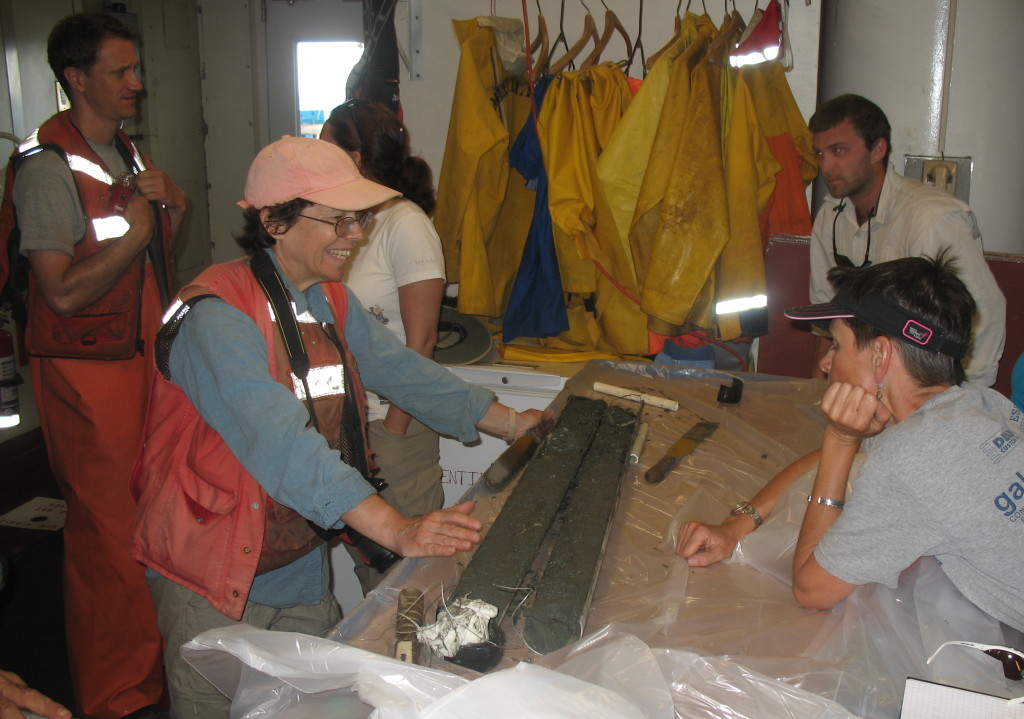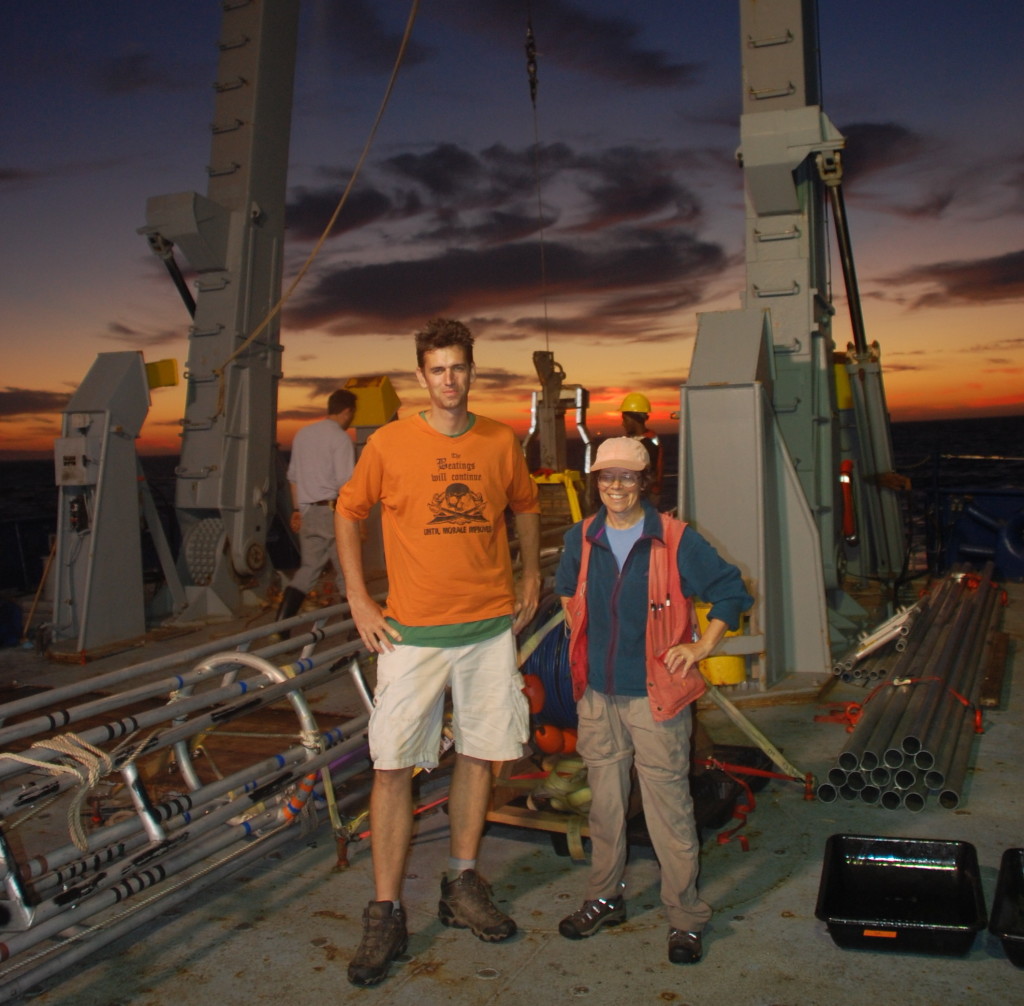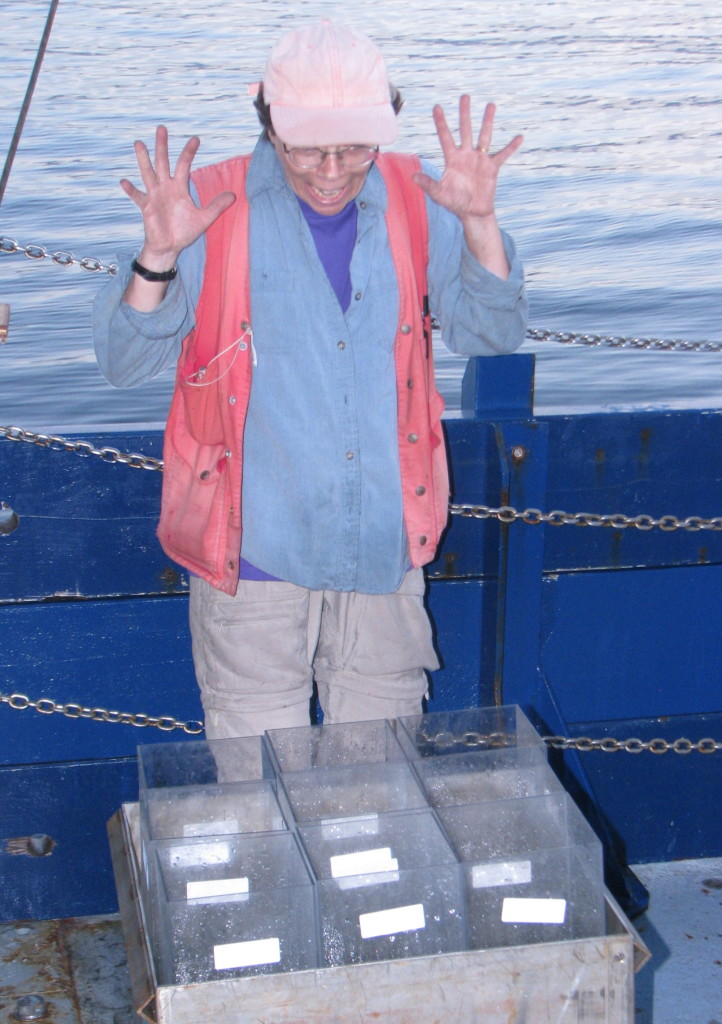
PhD from Yale, BS from the College of William and Mary
Field sites past & present: California, Montana, Nevada, Israel, Mexico, Panama, Costa Rica, Nicaragua, Bahamas, Jamaica, Alberta, scientific cruises in the Pacific
Photo by Tom Parker
When I was an undergraduate at the University of Chicago, double majoring in geology and biology, I took a LOT of science classes. Unfortunately, I can count on one finger the number of female professors I had in those classes. Fortunately, Dr. Sue Kidwell was the one I did have. U of C prides itself on giving students a well-rounded education (know any other universities with a swim test?), and I truly believe there is no better model for this than Sue: case in point, the title of one of her Geology papers contains the word “palimpsests.” If you don’t know what that means, go look it up and treat yourself to a fun history lesson.
After graduating from U of C, I knew that Sue was a great professor – she’d won the university’s top prize for undergraduate education and all the students loved her. I’m embarrassed to admit that it wasn’t until I kept coming across her name in early graduate school reading that I realized what a big shot scientist she is (Charles Schuchert awardee, AAAS Fellow, etc.). Together with Smithsonian paleontologist Dr. Kay Behrensmeyer, Sue revolutionized the field of paleontology known as taphonomy, the study of how living communities become fossil assemblages. In particular, Sue has championed an approach called live-dead studies, in which the researcher compares the diversity and composition of living communities (shallow-water marine animals, in Sue’s case) to that of the death assemblage (the dead skeletons lying on the ocean floor).
Initially, Sue was interested in quantifying how faithfully fossil assemblages capture the actual living community in order to answer big picture paleo questions. Stop and think for a minute – all those interesting questions in paleontology (see previous blogs for examples) are about LIVING things, not their fossil remains. Recently, though, Sue has been applying live-dead studies to conservation and remediation. Death assemblages have the potential to provide a baseline against which to compare modern ecosystems affected by humans. Without knowing what an ecosystem was like before any human impact, it is impossible to develop an effective remediation plan. As Sue wrote to me, “So, although basic research questions drive the overall science, and get the funding for it, big personal motivation is to develop methods and protocols for use by enviro managers and restoration ecologists, who are in the trenches of the Anthropocene.”
Because of her interest in conservation, Sue has spent less time doing what she calls “rock-hammer geology” and more time on scientific cruises collecting sediment cores offshore of LA. These sediment cores preserve the last few centuries to millennia, and have potential to provide these necessary baselines for marine ecosystems. In 2012 and in collaboration with Dr. Clark Alexander, Sue co-led a science party of 35 and ship’s crew of 23 on a 300-foot research vessel. Pretty sweet field vehicle, right?! Below are a couple more pictures Sue sent me of that cruise.


For more information on Dr. Sue Kidwell, please visit: http://geosci.uchicago.edu/directory/susan-kidwell